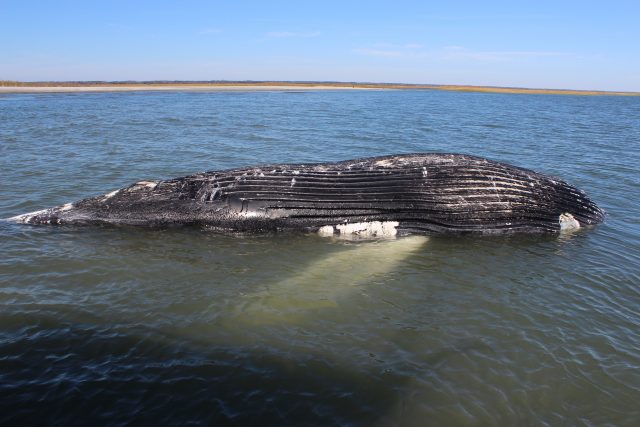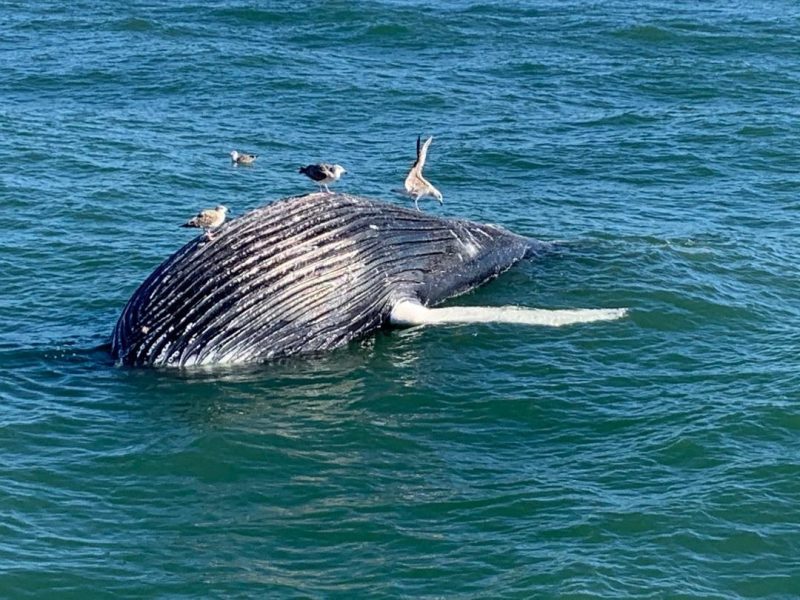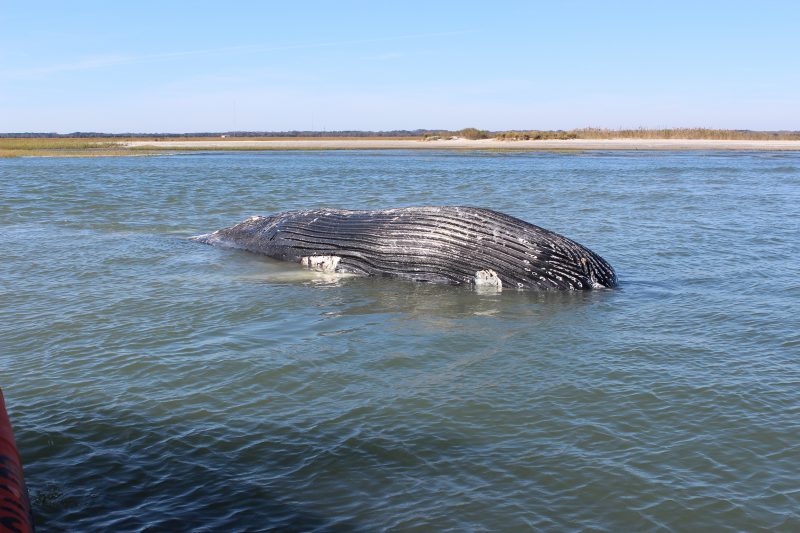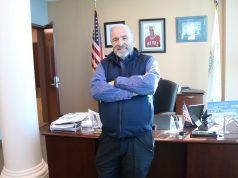
By MADDY VITALE
A dead 30-foot, two-ton, humpback whale is stuck in the mud in a shallow section of Townsends Inlet between Sea Isle City and Avalon and all marine experts and officials can do is wait until the currents move it.
Bob Schoelkopf, director of the Marine Mammal Stranding Center, said the adult whale was discovered Thursday.
“One of our volunteers was surf fishing and called us right up,” Schoelkopf said in an interview Friday with SeaIsleNews.com. “Unfortunately, it parked itself in the shallows of the inlet. We could have brought it in earlier when the waters were navigable, but they aren’t now.”
On Thursday, members of the U.S. Coast Guard, along with members of the Marine Mammal Stranding Center went out to view the whale.
“The Coast Guard put a tracking device on it,” Schoelkopf explained.
As of Friday afternoon, the whale carcass was still in the same spot as it was the day before — in the mud, Schoelkopf said.
There were a couple of reasons why the whale couldn’t be moved.
The first was the danger.
Sharks were feeding on the carcass. The waters in that area are shallow – chest deep and if the currents changed it could move the whale and pose a danger to the marine experts who would be trying to relocate it, Schoelkopf pointed out.
So, for now, they wait.
But the inevitability is it will end up on property either in Sea Isle or Avalon.
And if it does, it will not be good for the residents, Schoelkopf said, adding that the sight and smell will not be pleasant.
“It is still stuck in the mud in between Avalon and Sea Isle,” he said. “Since we just had a full moon tide, it might just sit there and decay.”
If the animal does end up on land, Schoelkopf said that the center volunteers would be more than happy to assist the municipality with the handling of the remains and burying the whale.

Over the last year, there were 12 incidents in which whales washed ashore or were spotting floating dead in the water. Schoelkopf said each year at about this time the figure is roughly the same.
In some instances, whales wash up and MMSC volunteers bury the mammals right on the beaches. Necropsies are done as well.
“I can tell you there are mammals buried on the beaches up and down the coast,” Schoelkopf said.
However, at least at this stage considering where the whale is, it is too precarious to move the whale, he said.
He hopes that the carcass will move with the current creating the possibility that it could be brought to land, examined and necropsied.
Schoelkopf said the experts would be looking for fractures or broken bones or illness.
He recalled an incident in Ocean City that happened years ago.
“We buried a 30 foot sperm whale on the Ocean City beach on the Longport Bridge side of the island,” he said.
In that instance, members of the stranding center towed the whale to the beach to safely bury it.
“People lay out on the beach and they don’t even know they are on top of a whale,” Schoelkopf said.
And while it is upsetting to some, death of marine life, like all other animal deaths, is just the circle of life.
“Look it happens. Marine life dies,” Schoelkopf said. “People don’t see how many animals die at sea. It is just something that happens in life. But when humans see it, they gain more of a perspective about marine life.”
The Marine Mammal Stranding Center is located in Brigantine and handles all of the state’s calls for assistance with marine life.
With COVID-19, the center, made up of hundreds of volunteers, has seen a drastic cut in staff and donations, he emphasized.
“We still have to pay for the same insurance, pay for the food for the animals. This is a tough year,” he said.
To donate to the Marine Mammal Stranding Center visit www.mmsc.org








